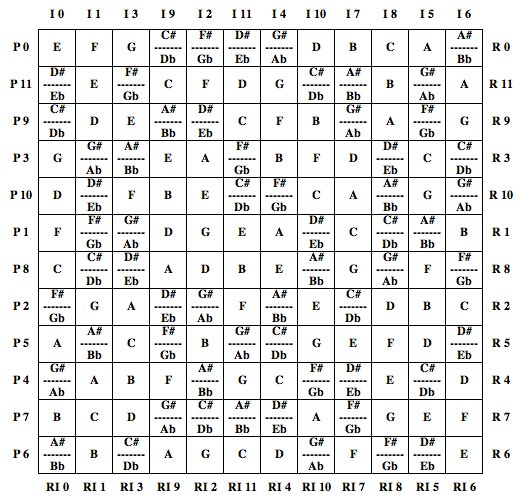Teaching Serialism with Technology
Teaching 8th Grade General Music can pose many challenges. Teaching the History of Western Music to 8th graders can pose even more. How can one successfully capture the attention of middle school students (the period before they eat lunch) when discussing the works of Bach, Mozart, Mahler, and Copland? Although there are effective approaches to the teaching of this specific subject matter that do not involve technology, approaches that effectively incorporate technology can truly bring the subject matter to life in ways you may not have imagined were possible.
When I taught at the Franklin Avenue Middle School in Franklin Lakes, NJ, I taught the History of Western Music course to 8th graders. The students had ten weeks to get from Gregorian Chant to Minimalism. The course was broken down into ten one-week units, each covering a different period of music history. It was a whirlwind tour, but the students really seemed to enjoy seeing the progression from neumatic notation of monophonic chants to the brilliance of Aaron Copland’s Fanfare for the Common Man. All of the lecture-style lessons were presented using PowerPoint, which included various visual images, and representative audio examples. Students responded very positively to these types of presentations, and saw that I had spent a great deal of time preparing each lesson. This, I found, made the students more likely to pay attention to the lesson, and get more out of it. In addition to using technology as a tool for presenting information to the students, each unit also involved using technology to create music in the style of the period. Students created parallel organum, two-part inventions, variations on a theme, and even compositions based on tone rows in the Serialist style. This tone row lesson and composition exercise received some amazing results, as it gave the students an opportunity to compose music that sounded very similar to the works of Arnold Schoenberg, Alban Berg, and Anton Webern. The following is a detailed description of the lesson and the composition project.
Lesson Plan
In the lecture part of the lesson, I presented the students with the twelve-tone concept, and the formation of tone rows. We discussed the variations on the tone row, including prime, retrograde, inversion, inverse retrograde, and transpositions. After the technical aspects of the construction of a serialist composition were discussed, the students listened to recorded examples of works by Schoenberg, Berg, and Webern. Following the listening examples, the discussion turned to aesthetics and the role of creativity in the composing process, as well as the end result. I strongly recommend having this discussion with 8th graders, because their opinions are often quite enlightening.
Following that discussion, students were given a sheet with a notated one-octave chromatic scale complete with the letter names of each pitch, and four lines with twelve spaces for the students to fill in their tone rows (prime, retrograde, inversion, inverse retrograde). Students used the matrix calculator from MusicTheory.net to complete their tone rows.
The students then got into groups of two and created their tone rows at their desks. They then handed in their work so that I could check for mistakes. During the next class, students used a notation software program (in this case Noteflight) to begin composing their serialist works. The work had to be at least 12 measures in length, and had to use each tone row at least once. Students were encouraged to use the transposition feature of the software to transpose their tone rows. Students were encouraged to divide the tone rows between various instruments so that no single instrument played the complete row alone. The piece was then orchestrated for at least a string orchestra, although student may add more instruments if they choose to.
Arnold Schoenberg
At the beginning of the third class period, I projected the student work from Noteflight for class discussion, focusing on how they were using the tone rows to compose. After this discussion, the students began their second composing period. I acted as a mentor for the students and helped troubleshoot any problems that they ran into. At the conclusion of the period, students once again saved their work, I then reviewed their work again, making any necessary comments. On the third day, the students were asked to complete their compositions halfway through the period so that we could then display and discuss their work. As each composition generally took only a few seconds to perform, it was quite possible to play all of the group compositions within a few minutes. After a short discussion about the compositions and their musical merit, the students then listened to the original works of Schoenberg, Berg, and Webern, and discuss how their own pieces were similar, different, or otherwise to the works of the masters.
This unit generally took about four forty-five minute class periods to complete, but it could easily be stretched into five. In my experience the students truly enjoyed the puzzle-like composition process employed by Serialism. They enjoyed that the notes were already there for them and that they just have to fit them in to the score, and more importantly, trying to make music. Discussions about the amount of creativity involved in this style of composition were very spirited and easily lead to more involved discussions about aesthetics.
If you have done something similar, or if you use this lesson plan with your students, I’d love to hear how it turned out!



